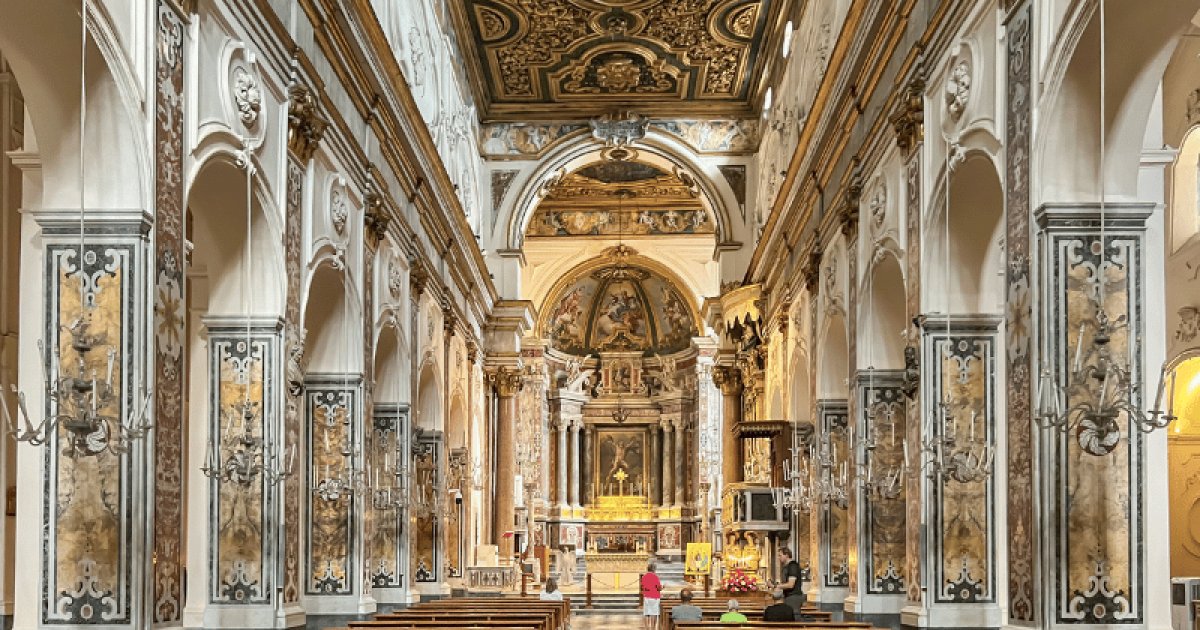AMALFI, Cathedral Interior
 Language: English / USA
Language: English / USA
Baroque style prevails here inside the cathedral, as you can see from the rich marble decorations and stucco work, although the traces of ancient columns that remain visible also contribute to the charm and history of the place. As you venture into the aisles, look up and admire the masterfully crafted coffered ceiling above you.
Gothic and Renaissance styles prevail in the side chapels. One of these houses a group of wood sculptures depicting the Apparition of Saint Michael Archangel to Saint Fedele, surmounted by the tomb of the holy martyr. The ceiling, adorned with golden friezes, tells the Stories of St. Andrew, patron saint of the city.
On the left aisle, you will find the 16th-century statue of the saint, along with those of the Dead Christ and Our Lady of Sorrows. In the striking Chapel of Reconciliation, located at the end of the nave, rests the relic of St. Andrew's head, or rather a portion of it, since part of it was returned to the city of Patras.
On the cathedral's Baroque high altar is a large painting depicting the crucifixion of St. Andrew the Apostle. Next to it, on another altar, is a modern painted wood crucifix.
If you can, go down into the crypt, built over the tomb of the patron saint, where you will find some remarkable frescoes. The largest of these depicts the arrival of St. Andrew's body in Amalfi Cathedral.
The altar here features some outstanding works, such as the bronze statue of St. Andrew by Michelangelo Naccherino, the marble statue of St. Lawrence by Pietro Bernini, and the statue of St. Stephen by a local sculptor.
Let me leave you with an interesting fact: The cathedral is home to a statue of St. Andrew, a silver-clad bust weighing a total of 380 kilograms, which is carried in procession through the streets of the city twice a year. The special feature of this procession is the finale: the run of the bearers of St. Andrew! After a pause to regain their strength, the bearers run up the steps, cheered on by the people watching the scene.



